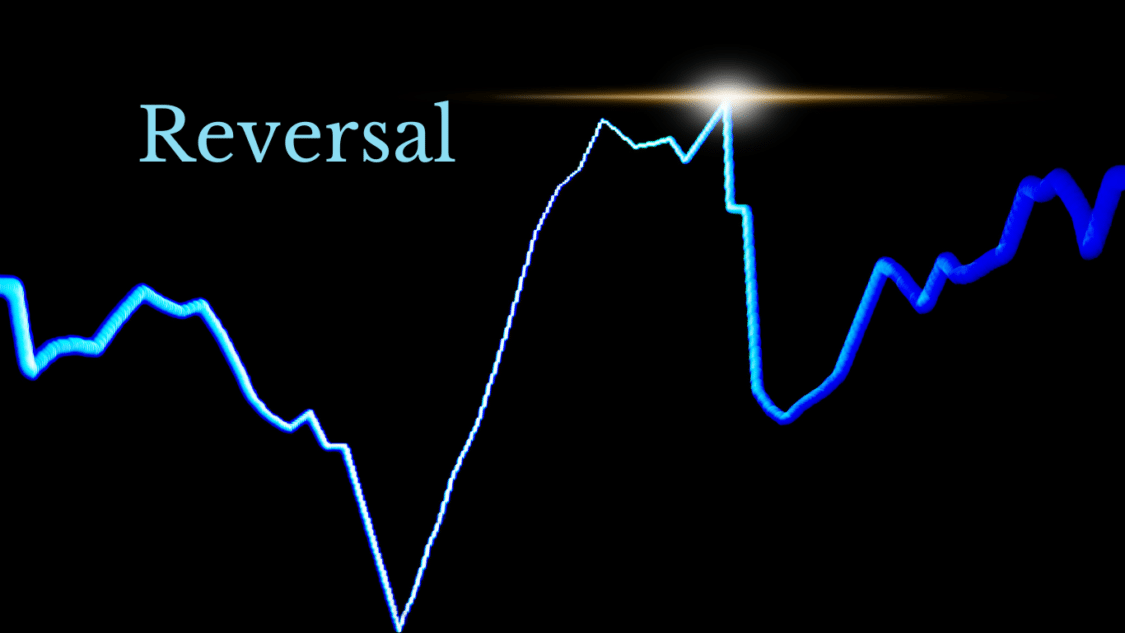Leverage Trading is a great option to increase profits; however, each strategy comes with its risks. Before choosing a strategy, you should be educated on all available options. Let’s go through seven of the best crypto leverage trading strategies.
Range Trading
Range trading is a popular strategy that involves identifying and taking advantage of price movements within a defined range in the market. Traders using this strategy look for markets that exhibit a consolidation or sideways movement, where prices tend to trade within a specific field for an extended period. Range trading can be applied in various financial markets, including stocks, forex, commodities, and cryptocurrencies.
One of the critical aspects of range trading is identifying the range itself. Traders typically use technical analysis tools, such as support and resistance levels, trend lines, and chart patterns, to determine the upper and lower boundaries of the range. Once the range is identified, traders can look for potential buying or selling opportunities.
Range trading can be a profitable strategy if executed properly. Here are some potential advantages of range trading:
- Lower risk: Range trading offers lower risk than other trading strategies, as traders can place their stop-loss orders just outside the range boundaries. This allows for tighter risk management, as traders can limit their potential losses if prices break out of the range.
- Clear trade signals: Range trading can provide clear trade signals based on the upper and lower boundaries of the range. Traders can enter long positions near the lower boundary and exit near the upper limit, or vice versa for short positions, based on the price action within the range.
- Scalping opportunities: Range trading can also offer short-term scalping opportunities, as traders can take advantage of price fluctuations within the range. Scalpers may look for quick buy and sell signals within the range to capture small profits from multiple trades.
- Versatility: Range trading can be applied in various timeframes, from intraday to swing trading, making it suitable for different trading styles and preferences. Traders can adjust their trading approach based on the timeframe they are trading and the specific market conditions.
However, it’s important to note that range trading also has some potential drawbacks and risks that traders should be aware of:
- False breakouts: Range boundaries can sometimes be breached temporarily, resulting in false breakouts that can trigger stop-loss orders and result in losses. Traders must be cautious of false breakouts and wait for confirmation before entering a trade.
- Choppiness: Markets can sometimes exhibit choppy price movements within the range, making it difficult to identify clear trade signals. Traders must be patient and wait for clear confirmation signals before entering a trade.
- Limited profit potential: Range trading is a mean-reversion strategy, which means traders are betting on prices returning to the middle of the range. This can result in limited profit potential, as prices may only sometimes reach the opposite boundary of the range.
- Market volatility: Range trading may not be suitable during periods of high market volatility, as prices can break out of the range quickly and result in significant losses. Traders must be mindful of market conditions and adjust their trading approach accordingly.
In conclusion, range trading is a popular strategy that involves identifying and taking advantage of price movements within a defined range in the market. It offers benefits such as lower risk, clear trade signals, scalping opportunities, and versatility. However, it has potential drawbacks and risks, such as false breakouts, choppiness, limited profit potential, and market volatility.
Traders must thoroughly understand the nuances of range trading, implement proper risk management techniques, and constantly monitor market conditions to apply this strategy in their trading portfolios effectively. As with any trading strategy, conducting thorough research, practising with demo accounts, and seeking professional advice are essential for successful range trading.
Range trading is a popular strategy that involves identifying and taking advantage of price movements within a defined range in the market. Traders using this strategy look for markets that exhibit a consolidation or sideways movement, where prices tend to trade within a specific field for an extended period. Range trading can be applied in various financial markets, including stocks, forex, commodities, and cryptocurrencies.
One of the critical aspects of range trading is identifying the range itself. Traders typically use technical analysis tools, such as support and resistance levels, trend lines, and chart patterns, to determine the upper and lower boundaries of the range. Once the range is identified, traders can look for potential buying or selling opportunities.
Range trading can be a profitable strategy if executed properly. Here are some potential advantages of range trading:
- Lower risk: Range trading offers lower risk than other trading strategies, as traders can place their stop-loss orders just outside the range boundaries. This allows for tighter risk management, as traders can limit their potential losses if prices break out of the range.
- Clear trade signals: Range trading can provide clear trade signals based on the upper and lower boundaries of the range. Traders can enter long positions near the lower boundary and exit near the upper limit, or vice versa for short positions, based on the price action within the range.
- Scalping opportunities: Range trading can also offer short-term scalping opportunities, as traders can take advantage of price fluctuations within the range. Scalpers may look for quick buy and sell signals within the range to capture small profits from multiple trades.
- Versatility: Range trading can be applied in various timeframes, from intraday to swing trading, making it suitable for different trading styles and preferences. Traders can adjust their trading approach based on the timeframe they are trading and the specific market conditions.
However, it’s important to note that range trading also has some potential drawbacks and risks that traders should be aware of:
- False breakouts: Range boundaries can sometimes be breached temporarily, resulting in false breakouts that can trigger stop-loss orders and result in losses. Traders must be cautious of false breakouts and wait for confirmation before entering a trade.
- Choppiness: Markets can sometimes exhibit choppy price movements within the range, making it difficult to identify clear trade signals. Traders must be patient and wait for clear confirmation signals before entering a trade.
- Limited profit potential: Range trading is a mean-reversion strategy, which means traders are betting on prices returning to the middle of the range. This can result in limited profit potential, as prices may only sometimes reach the opposite boundary of the range.
- Market volatility: Range trading may not be suitable during periods of high market volatility, as prices can break out of the range quickly and result in significant losses. Traders must be mindful of market conditions and adjust their trading approach accordingly.
In conclusion, range trading is a popular strategy that involves identifying and taking advantage of price movements within a defined range in the market. It offers benefits such as lower risk, clear trade signals, scalping opportunities, and versatility. However, it has potential drawbacks and risks, such as false breakouts, choppiness, limited profit potential, and market volatility. Traders must thoroughly understand the nuances of range trading, implement proper risk management techniques, and constantly monitor market conditions to apply this strategy in their trading portfolios effectively. As with any trading strategy, conducting thorough research, practising with demo accounts, and seeking professional advice are essential for successful range trading.
Trend Trading
Trend trading is a popular strategy that involves identifying and taking advantage of trends in the market. A trend is a continuous directional movement in the price of an asset, either upwards (uptrend) or downwards (downtrend), over a certain period. Trend traders aim to profit from these price movements by buying during uptrends and selling during downtrends. Trend trading can be applied in various financial markets, including stocks, forex, commodities, and cryptocurrencies.
One of the key aspects of trend trading is identifying the direction and strength of the trend. Traders typically use technical analysis tools, such as trend lines, moving averages, and momentum indicators, to identify and confirm the presence of a trend. Once a trend is identified, traders can enter positions in the direction of the movement and ride the trend until it shows signs of reversing.
Trend trading can be a profitable strategy if executed properly. Here are some potential advantages of trend trading:
- High-profit potential: Trend trading can offer a high-profit possibility, as traders can ride the trend and capture significant price movements in the direction of the trend. Uptrends can result in long-term gains, while downtrends can offer short-selling opportunities and profit from price declines.
- Clear trade signals: Trend trading can provide clear trade signals based on the direction and strength of the trend. Traders can enter long positions during uptrends and exit during downtrends or vice versa for short positions based on price action and technical indicators.
- Trend following approach: Trend trading follows the adage of “the trend is your friend,” as it aligns with the idea of trading in the direction of the dominant market trend. This approach can provide a systematic and disciplined trading strategy, eliminating the need for frequent market predictions.
- Diversification: Trend trading can benefit a trading portfolio, as it can be applied in different timeframes and markets. Traders can diversify their trading approach by incorporating trend trading alongside other strategies, providing potential balance and stability to their overall portfolio.
However, it’s important to note that trend trading also has some potential drawbacks and risks that traders should be aware of:
- False signals: Trend trading can be susceptible to false signs, where price movements may appear to be a trend but later reverse, resulting in losses. Traders need to be cautious of false signals and use additional confirmation tools to validate the presence of a trend.
- Late entries and exits: Trend trading relies on identifying the start and end of a trend, which can be challenging. Traders may enter a trend late or exit too early, resulting in missed profit opportunities or premature exits.
- Market volatility: Trend trading may not be suitable during periods of high market volatility, as trends can be erratic and unpredictable. Traders must be mindful of market conditions and adjust their trading approach accordingly.
- Risk management: Trend trading can involve holding positions for an extended period, exposing traders to increased risk. To reduce possible losses, effective risk management strategies are essential. These include adjusting position sizes and placing stop-loss orders.
In conclusion, trend trading is a popular strategy that involves identifying and taking advantage of trends in the market. It offers advantages such as high-profit potential, clear trade signals, trend following approach, and diversification benefits. However, it has potential drawbacks and risks, such as false signals, late entries and exits, market volatility, and risk management challenges.
Breakout Trading
Breakout trading is a popular strategy that involves identifying and taking advantage of significant price breakouts from established support or resistance levels in the market. A breakout occurs when the price of an asset breaks above or below a key level, indicating a potential change in market sentiment and momentum.
Breakout traders aim to profit from these price breakouts by entering positions in the direction of the breakout and riding the momentum for potential gains. Breakout trading can be applied in various financial markets, including stocks, forex, commodities, and cryptocurrencies.
One of the key aspects of breakout trading is identifying potential breakout levels. Traders typically use technical analysis tools, such as support and resistance levels, trend lines, and chart patterns, to identify possible breakout points. Once a breakout is confirmed, traders can enter positions in the direction of the breakout and set stop-loss orders to manage risk.
Breakout trading can be a profitable strategy if executed properly. Here are some potential advantages of breakout trading:
- High-profit potential: Breakout trading can offer high-profit potential, as traders can capture significant price movements after a breakout. Breakouts can result in strong momentum moves, providing opportunities for substantial gains quickly.
- Clear trade signals: Breakout trading can provide clear signals based on the breakout of key support or resistance levels. Traders can enter long positions after a bullish breakout or short positions after a bearish breakout based on the price action and confirmation of the breakout.
- Early entry advantage: Breakout trading allows traders to enter positions relatively early in a potential trend reversal or continuation, providing an advantage in potential profit potential. Traders can capture the initial momentum of a breakout, resulting in more significant gains than trading strategies that enter later in the trend.
- Risk management: Breakout trading allows traders to set stop-loss orders at the opposite side of the breakout level, which can help manage risk. If the price reverses and breaks a bullish breakout level or above a bearish breakout level below, the stop-loss order can be triggered to limit potential losses.
However, it’s important to note that breakout trading also has some potential drawbacks and risks that traders should be aware of:
- False breakouts: Breakout trading can be susceptible to false breakouts, where the price briefly breaks above or below a key level but later reverses, resulting in losses. Traders need to be cautious of false breakouts and use additional confirmation tools to validate the validity of the breakout.
- Market volatility: Breakout trading may not be suitable during periods of high market volatility, as breakouts can be erratic and unpredictable. Traders must be mindful of market conditions and adjust their trading approach accordingly.
- Risk management: Breakout trading can involve holding positions with higher volatility, exposing traders to increased risk. Proper risk management techniques, such as setting appropriate stop-loss orders and managing position sizes, are crucial to mitigate potential losses.
- Market timing: Breakout trading relies on quickly identifying and acting upon breakouts. Traders need to be proficient in identifying potential breakout levels and confirming the validity of breakouts to avoid entering late or premature trades.
In conclusion, breakout trading is a popular strategy that involves identifying and taking advantage of significant price breakouts from established support or resistance levels in the market. It offers high-profit potential, clear trade signals, early entry advantage, and risk management benefits. However, it has potential drawbacks and risks, such as false breakouts, market volatility, risk management challenges, and market timing considerations.
Traders need to thoroughly understand the nuances of breakout trading, implement proper risk management techniques, and constantly monitor market conditions to apply this strategy in their trading portfolios effectively. Conducting thorough research and practice with a demo account and seeking guidance from experienced traders can also benefit aspiring breakout traders.
When applying breakout trading, it’s crucial to have a well-defined trading plan that includes entry and exit rules, risk management strategies, and a clear understanding of the market conditions and overall trends. Traders should also be aware of the importance of patience and discipline, as breakouts may only occur occasionally, and waiting for confirmed breakouts before entering positions is essential.
One common approach in breakout trading is to use multiple timeframes to confirm the validity of a breakout. For example, a trader may use a higher timeframe, such as the daily or weekly chart, to identify key support or resistance levels and then switch to a lower timeframe, such as the hourly or 15-minute chart, to confirm the breakout before entering a trade.
Another popular breakout trading strategy is the “pullback” or “retest” strategy. Traders wait for a confirmed breakout and then enter a trade on a pullback or retest of the breakout level. This approach can provide a better risk-reward ratio, as traders can enter at a lower price level with a tighter stop-loss order.
Considering the overall market context and sentiment when applying breakout trading is essential. Breakouts are more likely to be successful in a trending market with clear support and resistance levels, as opposed to a range-bound or choppy market where flights may be less reliable.
In conclusion, breakout trading is a famous strategy traders use to identify and take advantage of significant price breakouts from established support or resistance levels. It offers advantages such as high-profit potential, clear trade signals, early entry advantage, and risk management benefits. However, traders should also be aware of the potential drawbacks and risks, such as false breakouts, market volatility, risk management challenges, and market timing considerations.
A well-defined trading plan, patience, discipline, and risk management techniques are essential for successful breakout trading. By thoroughly understanding the nuances of breakout trading, using multiple timeframes for confirmation, considering the market context, and practising with a demo account, traders can potentially enhance their trading performance and incorporate this strategy effectively in their trading portfolios.
Reversal Trading

Reversal trading is known as one of the best leverage trading strategies. It is based on detecting when a trade will change its direction. Once the trade changes direction, the trader’s job is to understand the trend and quickly take a position.
Of course, reversal trends can go in both directions, whether downward or upward. Although the market, in most cases, retraces itself, a trader needs to detect whether it’s a reversal trend or a fake indication. To figure this out, there are various indicators that can be implemented.
Gap Trading
Gap trading is one of the leverage trading strategies that is used when there is no trading activity on the market. This usually happens when prices move sharply high or low, but in between, there are no moves. However, gap trading is appropriate for the day trader who monitors the previous day’s price gaps and looks for opportunities between these and the next day’s trading range.
In addition, an opening range higher than the previous day’s close is a gap indicating going long. In contrast, an opening range lower than the last day’s close suggests an opportunity to go short.
Momentum

Momentum trading is a strategy that focuses on price trends and their direction. This occurs when there is a significant price movement and traders sell and buy assets for an extended period. When the price changes, the momentum also tends to shift in a different direction.
Scalping

Scalping is a strategy focusing on making small, quick trades in the financial markets to capture small price movements. Traders who employ scalping aim to take advantage of short-term price fluctuations, often entering and exiting trades within seconds or minutes. In this write-up, we will explore the concept of scalping, its fundamental principles, strategies, and potential benefits and risks.
The main principle of scalping is to capitalize on small price movements by quickly entering and exiting trades. Scalpers often use technical analysis and fast-paced trading techniques to identify short-term market price patterns or momentum. They may use chart patterns, technical indicators, and level 2 market data to spot potential trading opportunities.
One common scalping strategy is limiting orders to enter and exit trades at specific price levels. For example, a scalper may place a buy limit order slightly below the current market price and a sell limit order slightly above the current market price. When the price reaches these levels, the charges are triggered, and the scalper takes advantage of the small price movement.
Another approach in scalping is to use market orders, where traders enter or exit trades at the current market price. Market orders are executed instantly, allowing scalpers to capture small real-time price movements. However, market orders may carry higher risks, such as slippage or sudden price gaps, resulting in larger losses.
Scalping requires quick decision-making, fast execution, and strict risk management. Scalpers typically use tight stop-loss orders to minimize losses and set small profit targets to lock in gains. Risk management is crucial in scalping, as a single losing trade can quickly wipe out the small gains made on each trade.
One of the potential benefits of scalping is the potential for high trading frequency and the ability to compound small gains into more significant profits over time.
Scalpers can also use increased market liquidity, as they aim to trade highly liquid instruments with tight bid-ask spreads. Scalping can also offer traders the flexibility to trade in various markets, including stocks, forex, commodities, and cryptocurrencies.
However, scalping also comes with inherent risks. Scalpers need to be highly skilled in technical analysis, have a deep understanding of market dynamics, and possess strong emotional control due to the fast-paced nature of the strategy. Slippage, sudden price gaps, and high trading costs, including commissions and fees, can impact profitability. Scalping can also be mentally and physically demanding, as traders must continuously monitor the markets and make quick trading decisions.
In conclusion, scalping is a trading strategy that focuses on making small, quick trades to capture market price movements. It requires quick decision-making, fast execution, and strict risk management. Scalping can offer the potential for high trading frequency and small gains compounding over time, but it also comes with inherent risks. Traders considering scalping should thoroughly understand the strategy, possess strong technical and emotional skills, and implement effective risk management techniques in their trading portfolios.
Final Thoughts
Now that you have a more detailed understanding of the seven best leverage trading strategies, you can choose which one best pertains to you and your goals as a trader. Before starting with any strategy, it is important to know how the market works and how to execute these strategies best.
Forex Trading – 5 steps to succeed:(Opens in a new browser tab)




